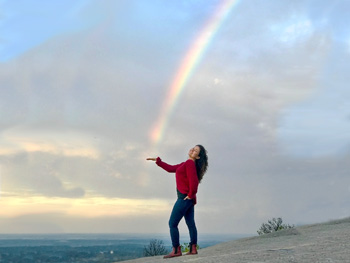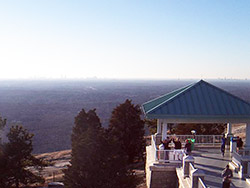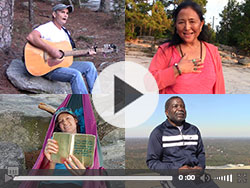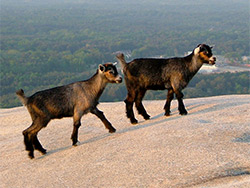The smiling, brown-skinned man heading my way up the mountain wore a T-shirt that read "Toss No Mas...Everyone's Pitching In" and a hat that said "Doing Our Best For You." The lone Spanish word mas caught my eye and even made me wonder if he might be Latino.
"Excuse me, may I take your picture, please?"
By simply stopping to talk with him about his shirt, I learned that Manu is a mathematics professor living in Baltimore, MD, who's originally from Kenya, and that he decided to climb Stone Mountain after attending the annual conference on Jainism in Atlanta from July 2-5. Former Atlanta Mayor and U.N. Ambassador Andrew Young and the Honorable John Lewis gave keynote speeches at the event. He warmly posed for the photo while his wife, Niru, and two grandchildren looked on.
I was so intrigued and excited to have met my first Jainists on the mountain that I asked if I might film him and his wife telling me more about Jainism, and they graciously obliged. I was fascinated to later discover through further research at home that the swastika symbol (svastika in Sanskrit) is actually considered an auspicious emblem among Jainists, Buddhists, and Hindus, despite the overwhelming association, and understandably so, of the symbol with the atrocities of Nazi Germany. Jainists don’t believe in harming or killing any living thing, not even an insect. It reminded me of the split between those who view the Confederate flag and the carving on Stone Mountain as a symbol of Southern pride and those who despise it as emblematic of racism and white supremacy. It seems to me that the interpretation of symbols relies heavily upon a willingness to learn, understand, and weigh the history informing all such symbols. A healthy and peaceful society should do what's best for the greater good of humanity, and in the case of the Confederate flag, demonstrate compassion and intercultural sensitivity when deciding how and where to display it.




















































